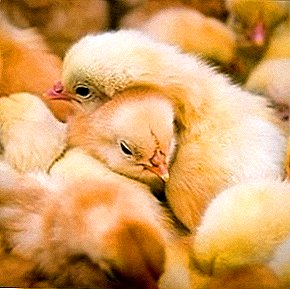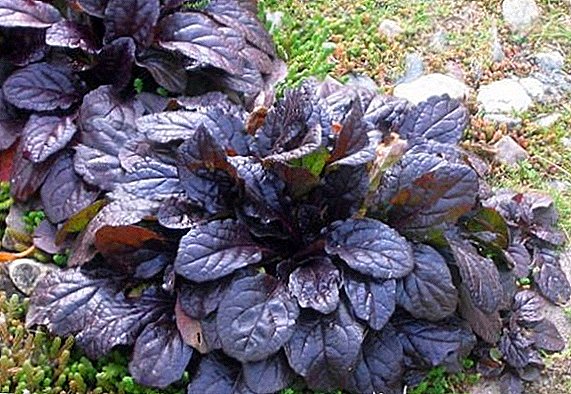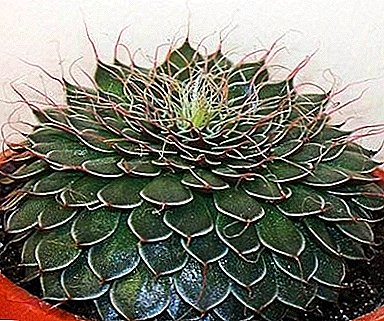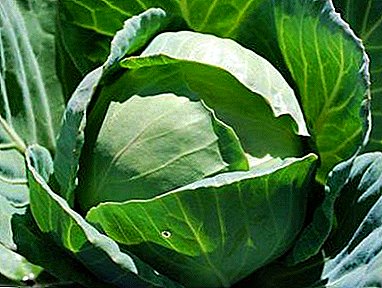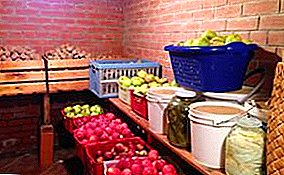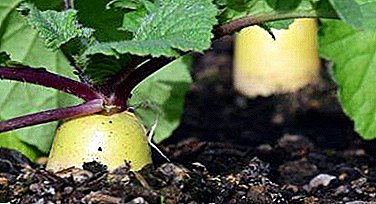
Green radish is an affordable and easy-to-care food culture that is widespread among gardeners and farmers.
Its vitamin and mineral composition allows the plant to be considered indispensable in preparing many vegetable dishes, preventing hypovitaminosis and various diseases, and its long shelf life makes the vegetable convenient to use and tasty all year round. It is for such qualities that all gardeners love green radish.
Features of growing vegetables
 Sow need soaked seeds. Seeds that are not soaked can germinate for a long time or may not germinate. Before planting, the seeds must be treated with a solution of boric acid and ridomil, which have fungicidal properties, to protect plants.
Sow need soaked seeds. Seeds that are not soaked can germinate for a long time or may not germinate. Before planting, the seeds must be treated with a solution of boric acid and ridomil, which have fungicidal properties, to protect plants.- Planting is done in the wells or grooves with a group of seeds - 3-5 holes in each well.
- After seed germination, thinning is carried out until, as it grows, one plant is left in each well. The soil before sowing should be in a moist state.
- As they grow, watering is carried out regularly and often, as the plant is moisture-loving. Mandatory compliance with the rules of crop rotation.
- Covering the beds with planted seeds, and then - shoots, black protective material to maintain the growth of seeds and shoots, especially in places with a short light day.
Compatibility with other cultures
Green radish is recommended to plant after:
- Solanaceae;
- Luke;
- garlic;
- potatoes;
- cucumbers;
- melons.
Re-plant this type of radish in the same beds can be in 3-4 years. It is not recommended to plant green radish after cabbage, corn, silage crops. Plants, near which the neighborhood of green radish is preferable:
- grapes;
- beans;
- radish;
- sweet basil;
- legumes.
Variety selection
When choosing a variety for planting, it is necessary to take into account the vegetation period of the plant and the particular climate of the territory. There are three types of green radish:
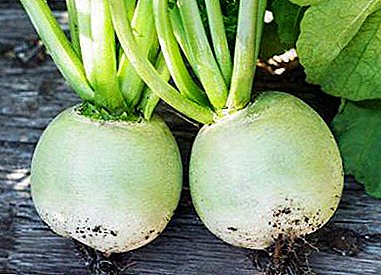 Early ripening:
Early ripening:- "Yuzhanka";
- "Green Goddess".
- Mid-season:
- "Glow";
- "Pink Ring".
- Late-ripening:
- "October-1";
- "October-2";
- "Severyanka".
Where and for how much can you buy seeds?
Seeds can be purchased directly in Moscow and St. Petersburg in stores for gardeners, as well as ordered online with delivery. Seeds are sold in paper bags of 2 grams. The cost of 1 bag ranges from 9 to 35 rubles, and an average of 22 rubles.
When to sow in open ground?
Factors that affect the landing time:
- term technical maturity of varieties;
- territory climate;
- daylight duration;
- features of care and method of planting;
- landing targets.
Given these factors, The optimal time for planting is as follows:
- In central Russia - in late April or early May. Possible landing from autumn to winter. If the radish is planted for rapid consumption, then choose the first half of May for planting. For storage for the winter - at the end of May or early July.
- In the Urals - in the second half of April or at the end of April.
- In Siberia - in the first half of April, when the temperature will be 4 degrees Celsius.
Step-by-Step Preparation Instructions
Soils
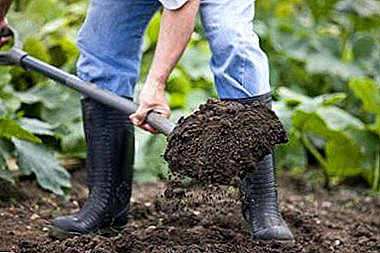 Sowing is carried out in neutral (slightly acidic) loose, well-ventilated soil, which must be prepared in the fall.
Sowing is carried out in neutral (slightly acidic) loose, well-ventilated soil, which must be prepared in the fall.- Loamy soil is not recommended for sowing.
- Slaked lime is added to the slightly acid soil, after which the soil is dug at a depth of at least twenty centimeters and humus or manure is added.
- After that mineral fertilizers are applied to the soil (potassium is preferable) at the rate of 30 grams per square meter, ammonium sulphate or superphosphate can also be added.
- Humus is added according to the scheme "1 bucket per square meter."
Inventory and seed
- For planting seeds used mini-rakes or special seed drills. You can plant seeds manually.
- Seeds before planting must be sorted, removing non-viable or having external damage.
- The day before sowing, seeds are soaked in a weak solution of boric acid (1-2%) for two to three hours. Boric acid can be replaced by cobalt sulphate and ammonium molybdate.
- Soaking is done according to the 1: 3 scheme (1 part of seeds for 3 parts of solution).
- After soaking the seeds are dried.
- For seed dressing, Ridomil is used at the rate of 0.4 grams per 100 grams of seeds.
- Sow up to 2 grams of seeds per 1 square meter of soil.
Places
Radish is light-loving and heat-loving plant. For planting choose open spaces with loose, drained soil, well lit most of the day. Do not sow seeds in shady places. It is recommended to sow not in lowland places - on raised beds the plant will give a higher yield. The optimum temperature for growth is 15-25 degrees.
How to plant: scheme and technology
Landing schemes and technology:
 In a 1 m wide garden bed, make 4 rows 30 cm apart and 2 cm deep furrows. Sow seeds in groups of 3-5 pieces with a spacing of 15 cm. After sowing, sprinkle with humus.
In a 1 m wide garden bed, make 4 rows 30 cm apart and 2 cm deep furrows. Sow seeds in groups of 3-5 pieces with a spacing of 15 cm. After sowing, sprinkle with humus.- In rows with a distance of 50-70 cm sow the seeds in the same way with a recess of 1-1.5 cm. After sowing, mulch with humus. The gap between the seeds after thinning is 15-20 cm.
- When nesting planting pits have a checkerboard pattern. Up to 5 seeds are sown in each hole.
After planting, the bed is covered with a film (film is not required when planting in a greenhouse). Shoots appear on the 4-5 day.
At night, seedlings are covered with black material for about 7-8 hours in an area with a long light day, and at 10-12 - in an area with a short light day.
Care
Care Activities:
- Watering. The plant belongs to moisture-loving, it is recommended to keep the soil moist. Watering is done immediately as the upper layers of the soil dry, and then loosened. Allowed daily irrigation of leaves from the dispenser.
- Thinning. It is a necessary procedure, because in the case of not thinning the plant will go to the arrow and bloom. Thinning is carried out three times:
- When the shoots will appear 2-3 true leaf. Between them leave a gap of up to 15 cm, removing the weakest shoots.
- When the rudiments of root crops are formed, all the plants without the green color of the foliage are removed.
- When the roots reach the size of 5 cm, 1 plant is left in the grooves at a distance of 20 centimeters from each other.
- Hilling. Held twice during the growth period. The first time - with the appearance of root crops, the second time - when they reach the size of 3-4 centimeters in length.
- Fertilizer. It is held at least two times during the growth period:
- Immediately after the first thinning. Garden beds sprinkled with powdered ash crushed into chalk at the rate of "100 grams per square meter."
- During the formation of root crops. Dilute 30 grams of nitrophoska in 10 liters of water. If during growth a blanching of the leaves is observed, then the shoots are watered with a solution of mullein or sprinkled with ashes a second time.
Possible problems and difficulties
 The following problems are possible:
The following problems are possible:
- Planting seeds that have not been soaked. In this case, the time of emergence of shoots is doubled, which can be a problem in areas with a cold climate.
Solutions: sowing in the greenhouse, covering the beds with dark protective material for at least 10 hours.
- The emergence of diseases. The main pests of seeds and radish sprouts: cabbage flies and cruciferous fleas, slugs.
Solutions: treatment of sprouts with crushed wormwood, ash, needles, tobacco dust, use of fungicide-treated seeds in planting. When slugs appear on a bed - to pile up a bed. Lime the soil when the first shoots.
- Plant rotting. Occurs when too much or abundant watering.
Solutions: follow the rules of irrigation - water the plants when the topsoil dries, after irrigation, loosen the soil. Remove rotted plants.
Green radish is an unpretentious and useful crop, which makes its cultivation affordable and simple in any territory, while observing all the rules of sowing and caring for it. The crop of this vegetable can be harvested several times per season, the plant is suitable for long-term storage and is widely used in cooking, animal nutrition and traditional medicine.


 Sow need soaked seeds. Seeds that are not soaked can germinate for a long time or may not germinate. Before planting, the seeds must be treated with a solution of boric acid and ridomil, which have fungicidal properties, to protect plants.
Sow need soaked seeds. Seeds that are not soaked can germinate for a long time or may not germinate. Before planting, the seeds must be treated with a solution of boric acid and ridomil, which have fungicidal properties, to protect plants. Early ripening:
Early ripening: Sowing is carried out in neutral (slightly acidic) loose, well-ventilated soil, which must be prepared in the fall.
Sowing is carried out in neutral (slightly acidic) loose, well-ventilated soil, which must be prepared in the fall. In a 1 m wide garden bed, make 4 rows 30 cm apart and 2 cm deep furrows. Sow seeds in groups of 3-5 pieces with a spacing of 15 cm. After sowing, sprinkle with humus.
In a 1 m wide garden bed, make 4 rows 30 cm apart and 2 cm deep furrows. Sow seeds in groups of 3-5 pieces with a spacing of 15 cm. After sowing, sprinkle with humus.
